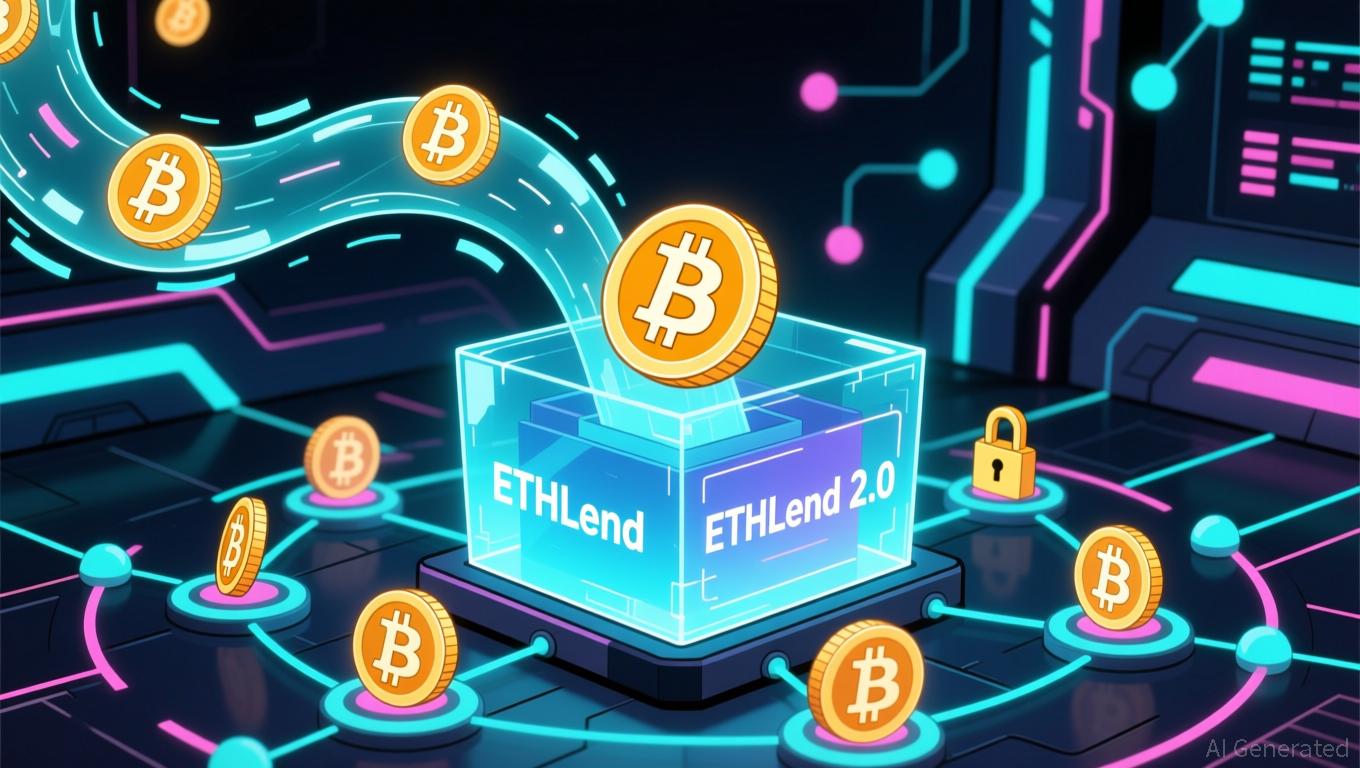Bitcoin News Update: Aave's ETHLend 2.0 Disrupts DeFi's Dependence on Wrapped Tokens by Introducing Native Bitcoin
- Aave founder Stani Kulechov announced ETHLend 2.0's 2026 relaunch using native Bitcoin as collateral, diverging from wrapped tokens. - The hybrid P2P-liquidity pool model aims to enhance DeFi efficiency while reducing synthetic asset reliance through cross-chain BTC integration. - This revival aligns with growing institutional demand for non-wrapped BTC and could restore utility for the legacy LEND token. - Despite bearish market conditions, the move signals confidence in Bitcoin's foundational role for
Stani Kulechov, the founder of Aave, has announced that ETHLend—the project’s original peer-to-peer lending platform—will be revived in 2026 with a major update:

ETHLend, which became known as
The DeFi sector has responded with both nostalgia and intrigue. Old screenshots of ETHLend’s 2018 interface have resurfaced on social media, showcasing the project’s journey from a small-scale P2P initiative to a major DeFi ecosystem.
Although the focus is on ETHLend’s return, the overall crypto market remains in a downturn.
This revival highlights Aave’s intention to move beyond just liquidity pools and broaden its product lineup. While it’s still uncertain whether ETHLend 2.0 will be a standalone platform or integrated with Aave, the renewed focus on P2P lending suggests it will complement Aave’s current offerings. This could appeal to users who prefer direct counterparty relationships, a need not fully met by automated market makers.
As DeFi continues to develop, bringing back ETHLend with native Bitcoin support puts Aave in a strong position to attract both long-time users and new institutional participants. With 2026 approaching, the industry will be watching closely to see how this hybrid approach balances fresh innovation with the efficiency that made Aave a leader in the space.
Disclaimer: The content of this article solely reflects the author's opinion and does not represent the platform in any capacity. This article is not intended to serve as a reference for making investment decisions.
You may also like
21Shares Hints at XRP ETF Launch as Community Buzz Builds
Quick Take Summary is AI generated, newsroom reviewed. 21Shares posted a teaser to the "XRP Army," signaling its spot XRP ETF launch is likely just days away. The firm filed an updated S-1/A document, including the Authorized Participant Agreement, a final step before trading begins. The launch adds to market momentum following NYSE Arca approval for Grayscale and Franklin Templeton XRP ETFs. Analysts project combined inflows across new XRP products could potentially reach $10 billion over time.References
NYSE Approves Franklin Templeton & Grayscale XRP ETFs
Quick Take Summary is AI generated, newsroom reviewed. NYSE approves Franklin Templeton and Grayscale XRP ETFs under the 1934 Act. Trading begins November 24, marking XRP’s biggest regulatory milestone. Franklin Templeton brings $1.6T institutional influence and fee waivers. Grayscale converts its existing trust into a fully liquid spot ETF.References X Post Reference
Ethereum Spot ETFs Record $55.7M Net Inflow as Fidelity’s FETH Dominates the Market
Quick Take Summary is AI generated, newsroom reviewed. Ethereum spot ETFs record $55.71M in net inflows on Nov 21. Fidelity’s FETH leads with $95.3M inflow, dominating the day. FETH cumulative inflows climb to $2.542B. Competitor ETFs see ~$39M in outflows.References X Post Reference
Vitalik Hails zkSync Airbender L1 Prover Breakthrough on 5090s
Quick Take Summary is AI generated, newsroom reviewed. zkSync's Airbender prover achieved real-time Ethereum L1 block proof generation using just two consumer-grade RTX 5090 GPUs. Ethereum Foundation researcher Justin Drake suggested the breakthrough could lead to "gigagas L1," significantly lowering L2 fees. Vitalik Buterin praised the progress but cautioned against "worst-case gaps" and suggested repricing gas for expensive operations like RSA verification. The achievement was confirmed ahead of the Ethp